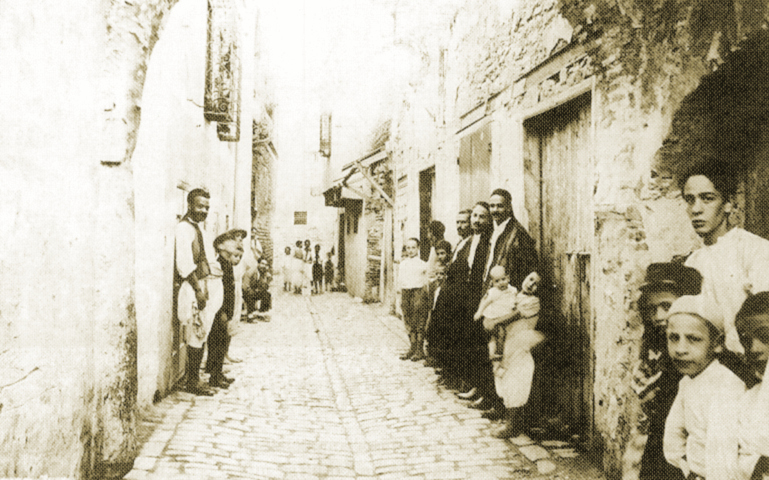There are perhaps 1,500 Jews in Tunisia in 2017. Within living memory, though, the country had a Jewish population of more than a hundred thousand.
From the 13th to 20th century, in the capital city, Tunis, the Jewish quarter was a poor neighborhood called the Hara. It was home to an intense, often insular Jewish community that spoke Judeo-Arabic.
This 1907 article suggests that the Hara celebrated every aspect of Purim in a big way: commemorating the story of Esther, widespread charity and hospitality, and, for some Jews, heavy drinking (of which the author clearly disapproves).
The writer’s description of Purim foods may be slightly “off,” but the article gives a vivid account of celebrations in what was once a vibrant Jewish neighborhood in North Africa.
PURIM IN TUNIS
by Mebasser
(Archives Israélites, March 21, 1907.
Translation from French ©2017 by Steven Capsuto.)
Passover is almost here, but perhaps it is still not too late to talk about Purim. In the Courrier de Tunisie, we find a piece by our contributor Mebasser, with picturesque new details about how Jews in Tunis celebrate the victory of Mordecai and Esther over Haman:
On the Saturday before Purim—known as Turnip Saturday or “Shabbat el Lefta,” which refers to a local legend—the young Jewish boys of the Hara are in the habit of celebrating Haman’s death. This mock ceremony is most unusual.
Early that morning, the boys gather in a very old house that lies in ruins at the heart of the Hara, in a place called the kharba.
There, as best they can, they use whatever they find at hand to fashion a small effigy—the kind that people try to knock over at a fair by throwing balls at it. This represents the famous Haman. They place him on a funeral litter and begin walking with it. They are followed by “Haman’s ten sons,” each with a funeral pall or wreath of similarly crude construction. This procession, numbering about a hundred urchins at the outset, travels through all the streets of the Jewish quarter, singing a popular Continue reading

